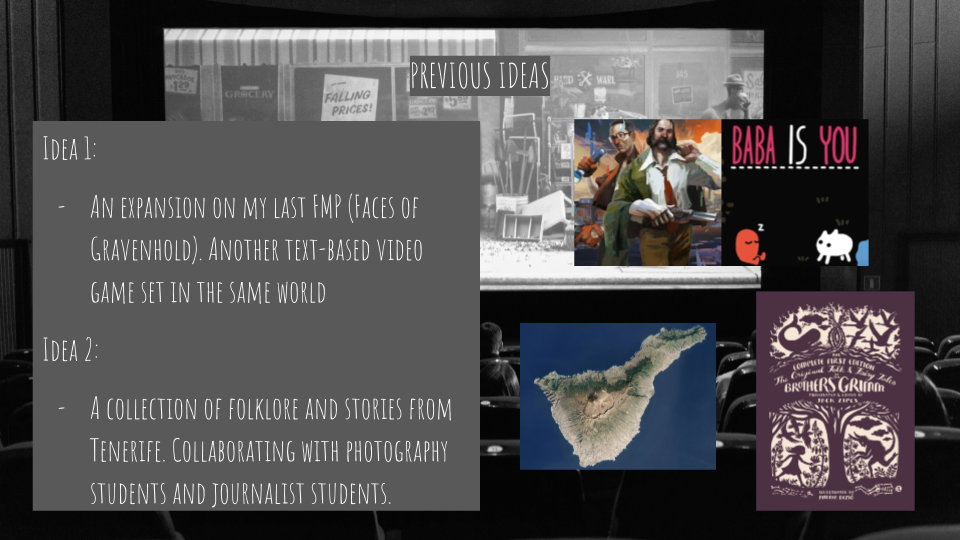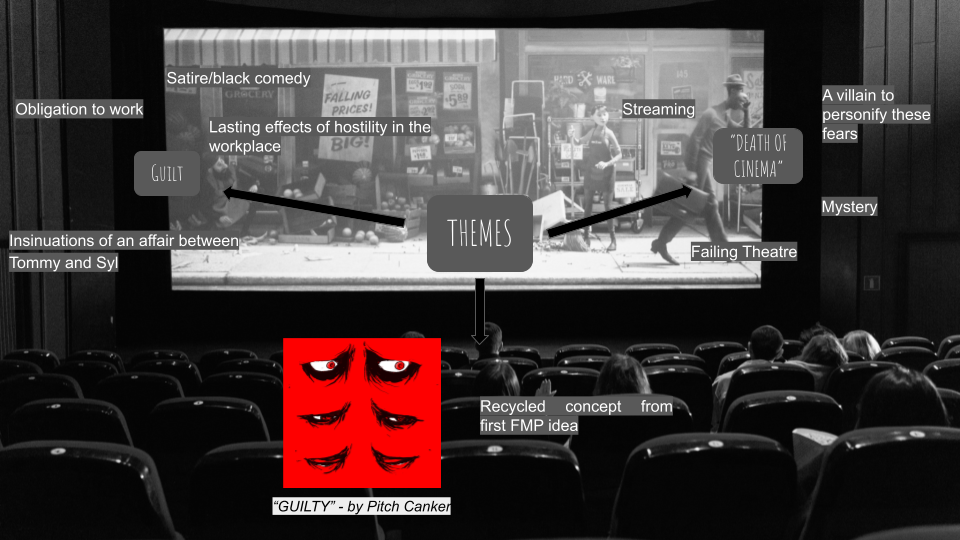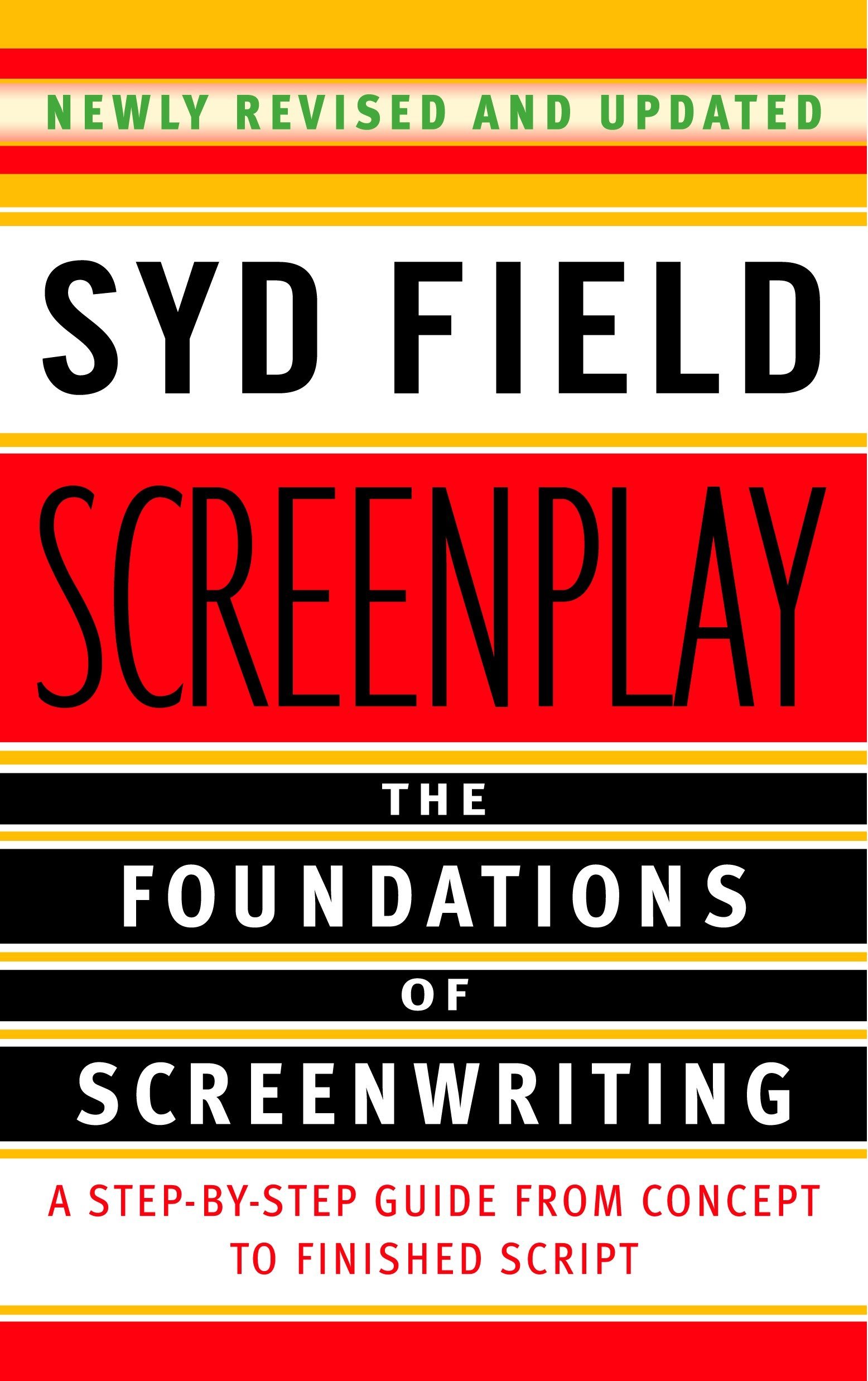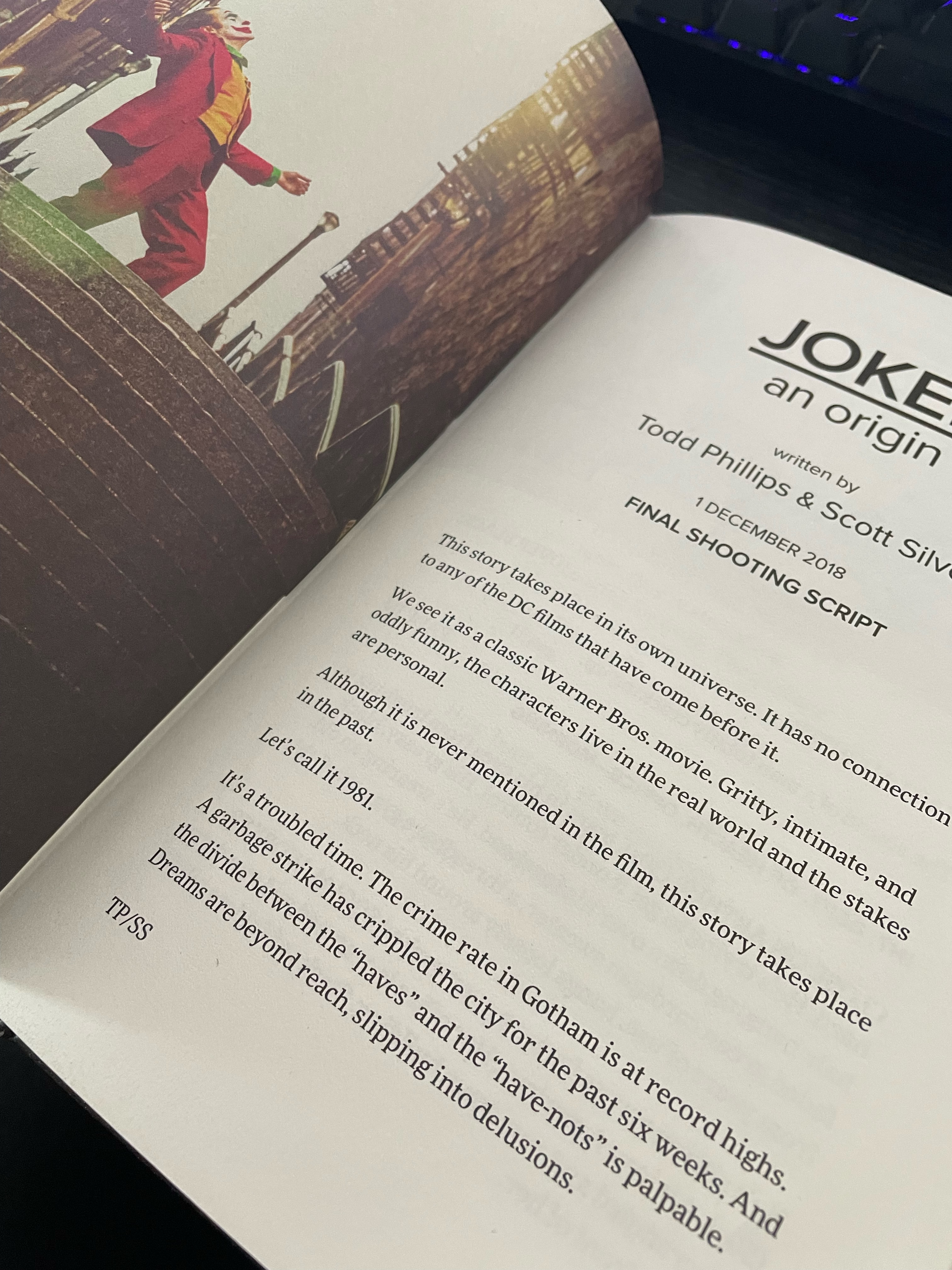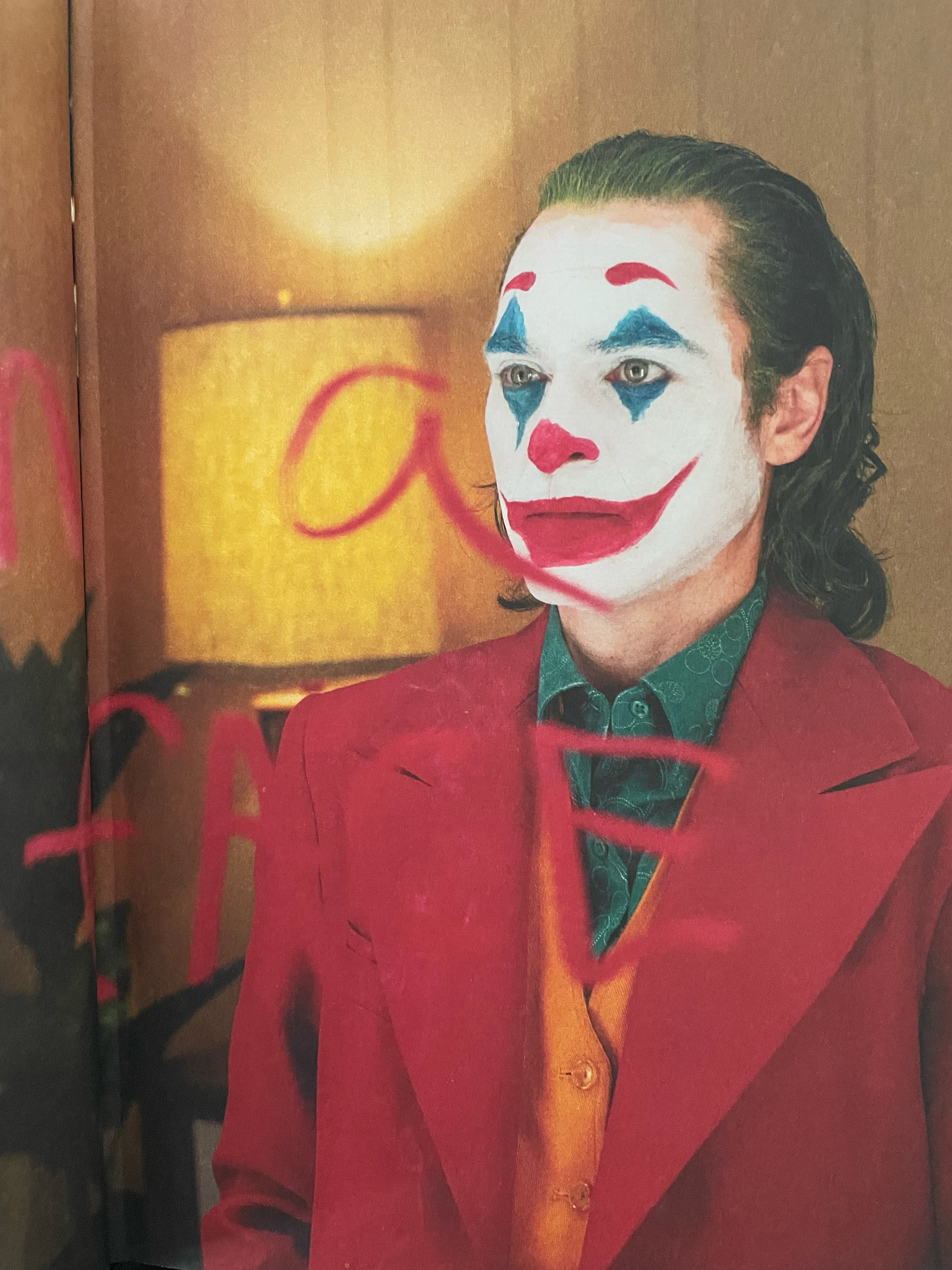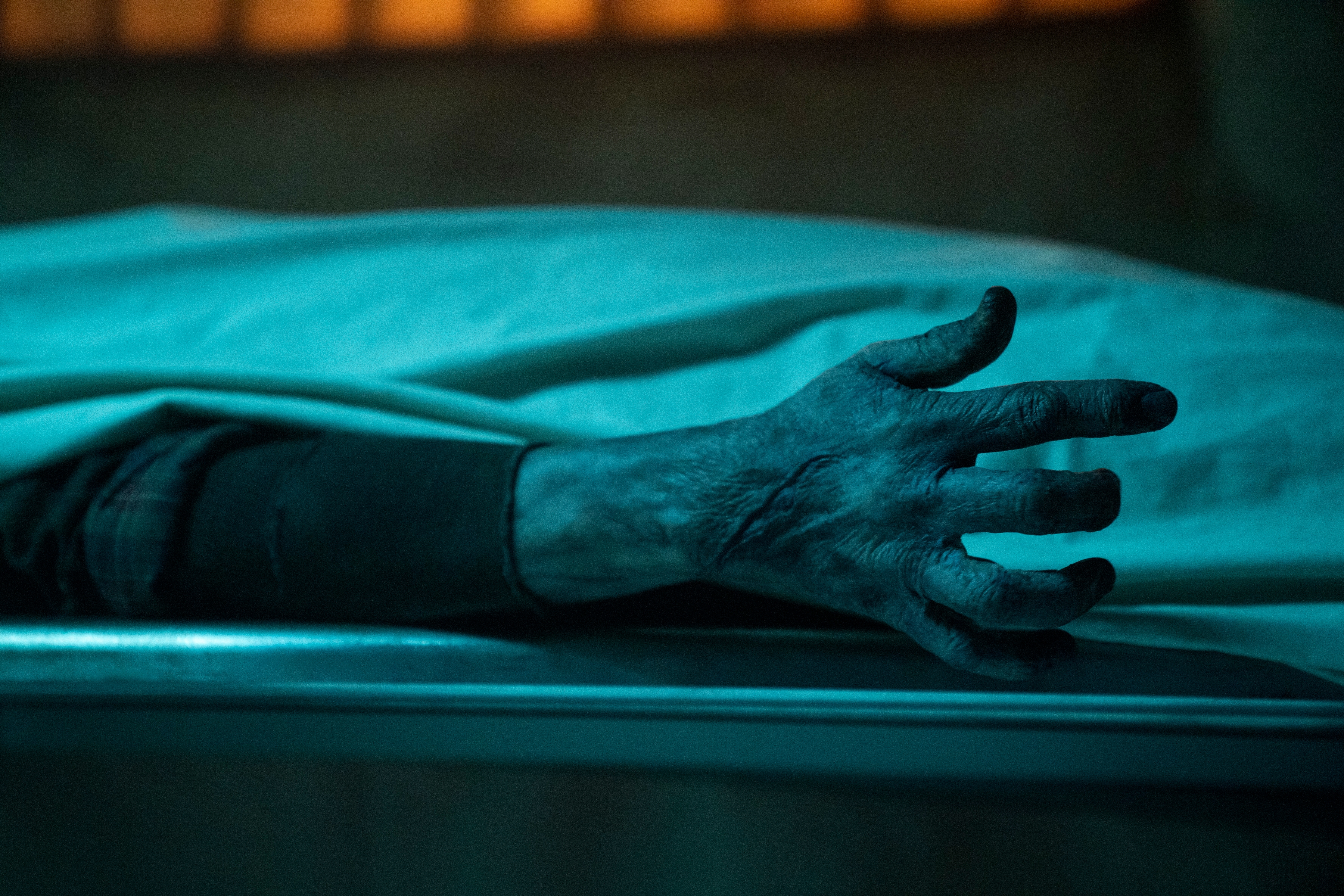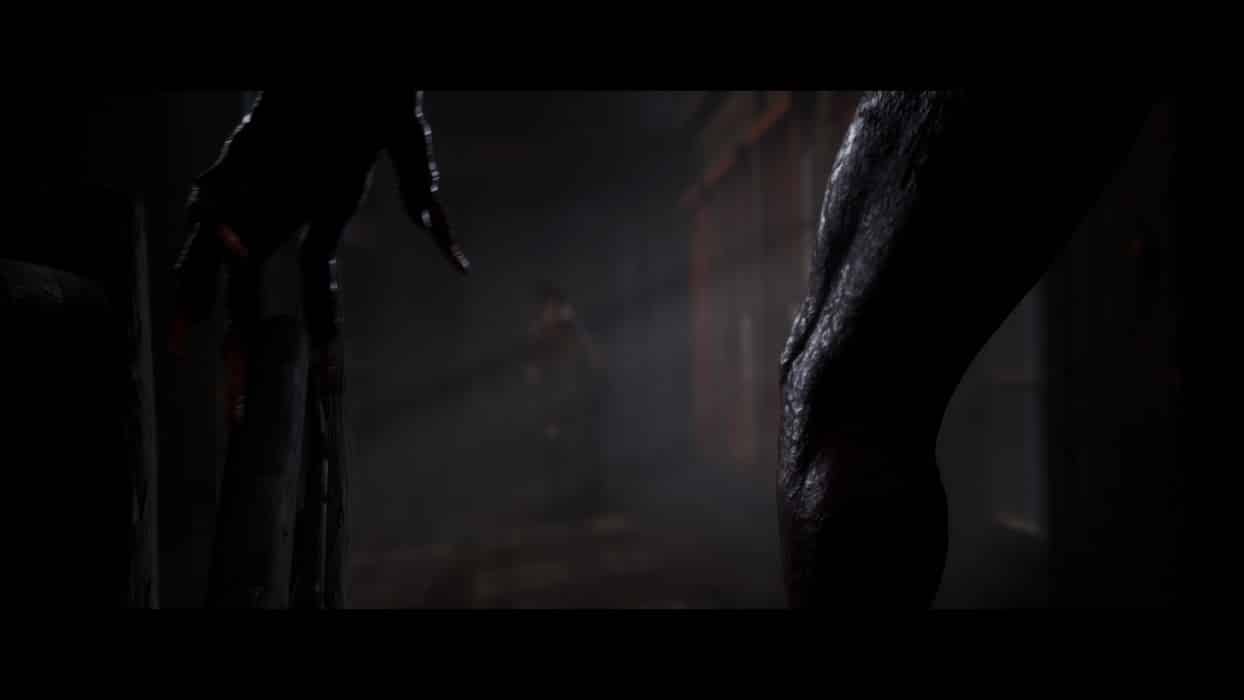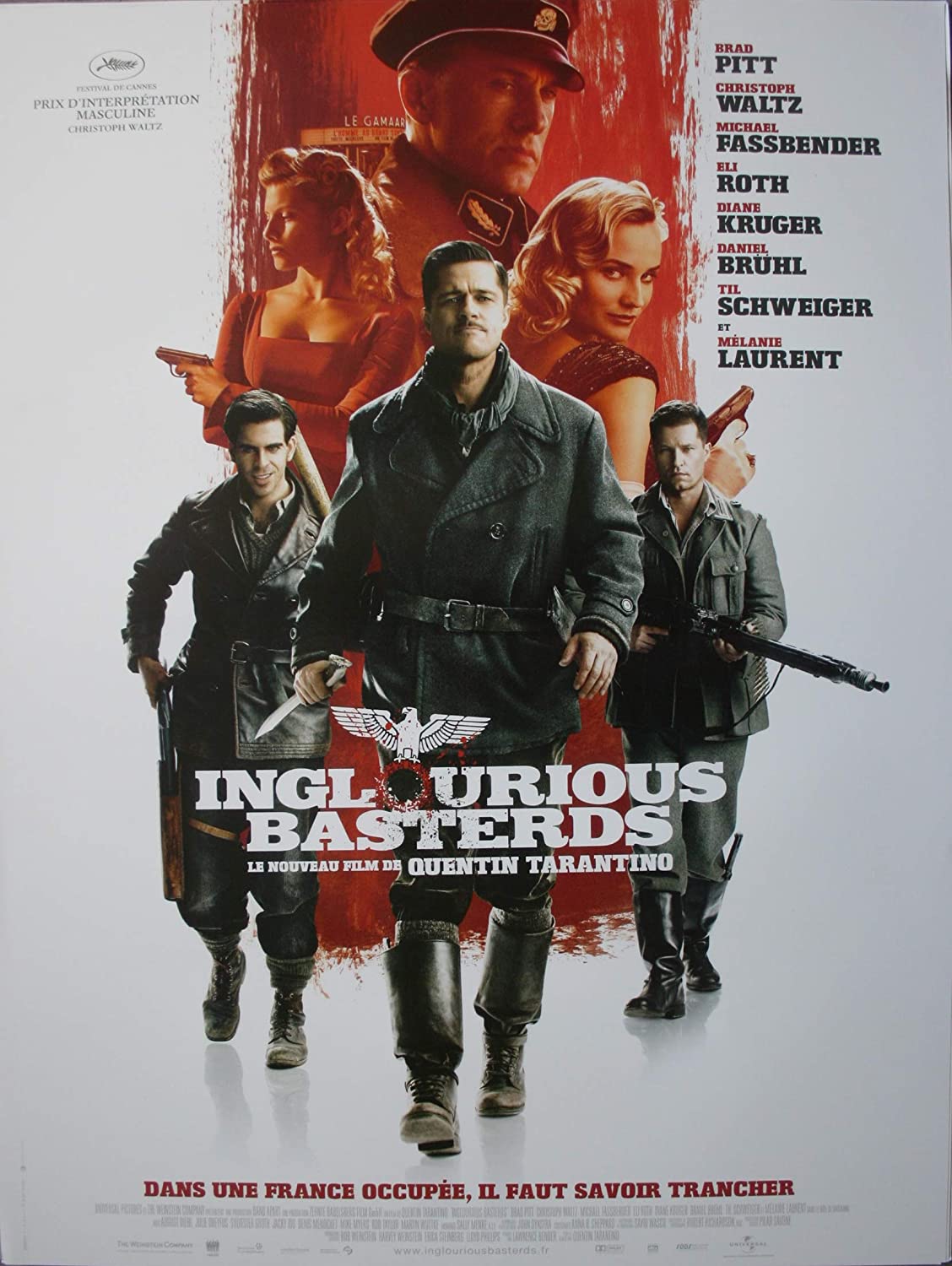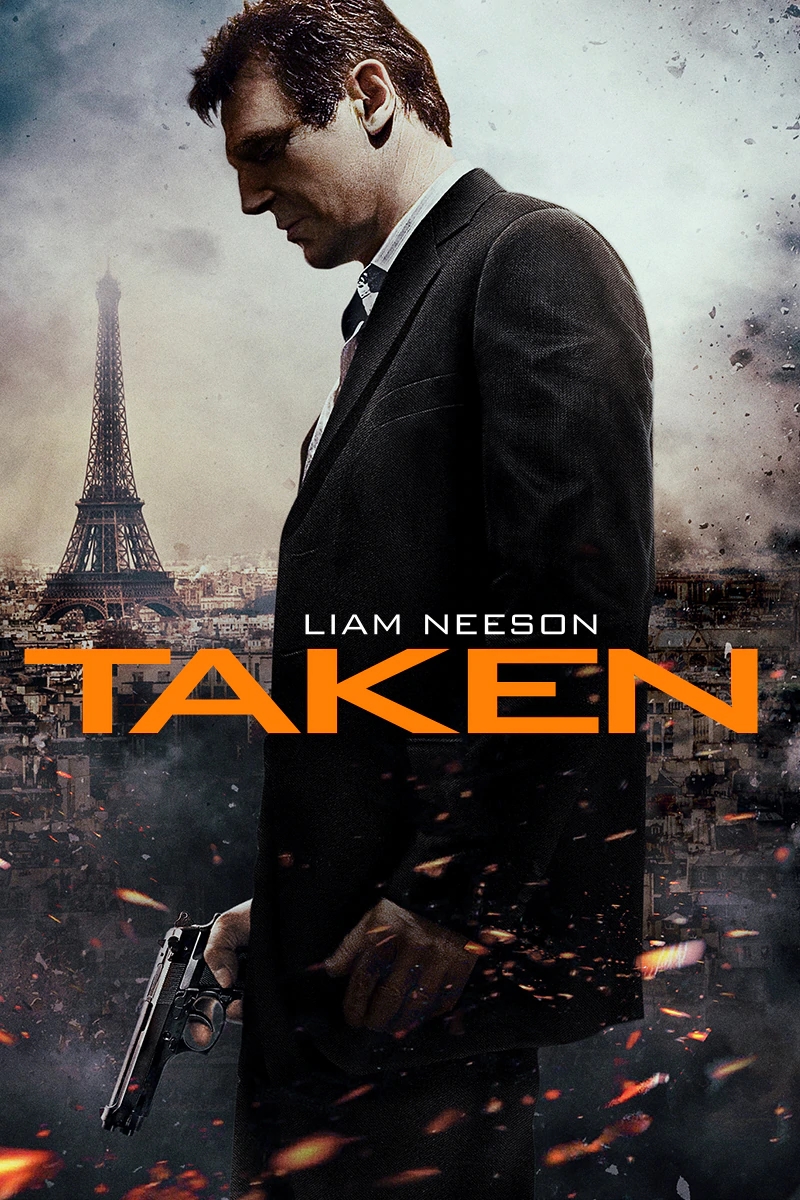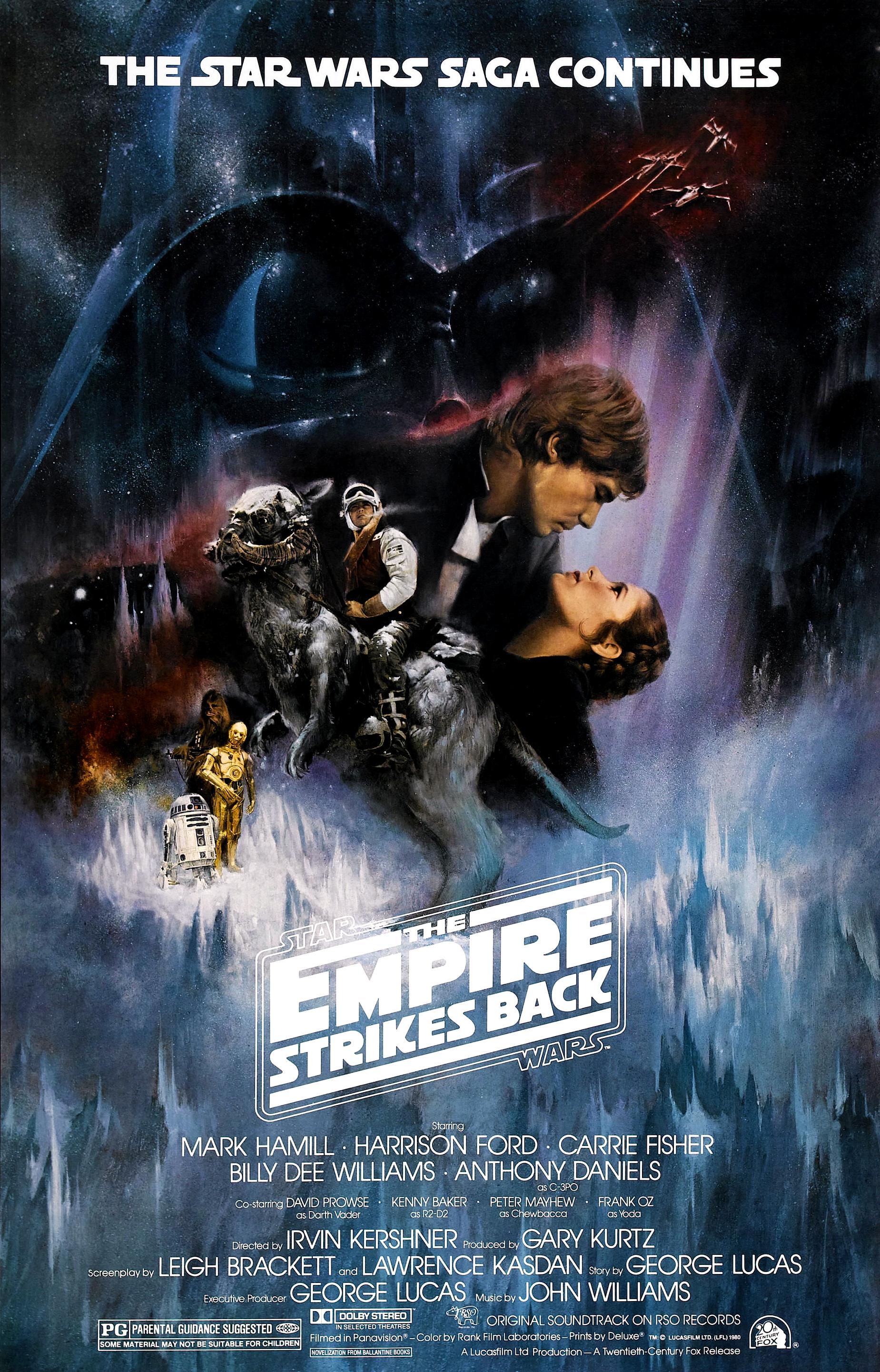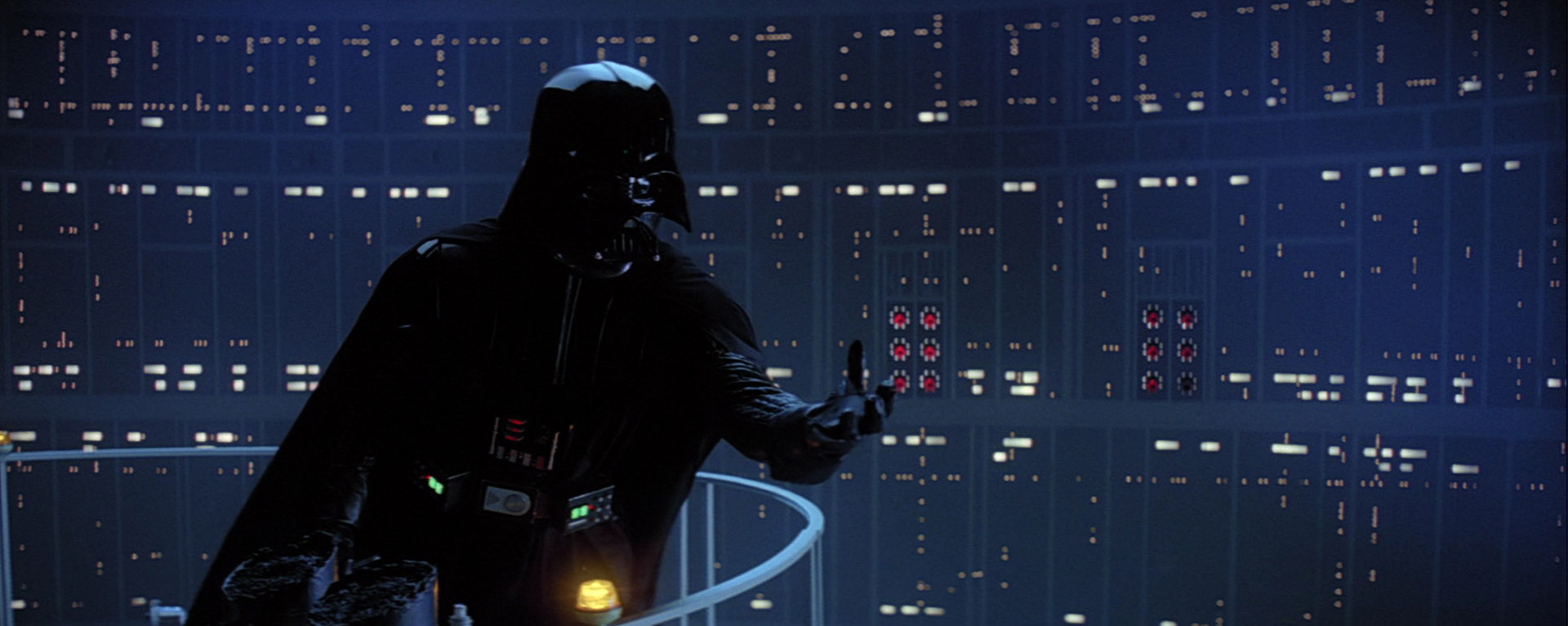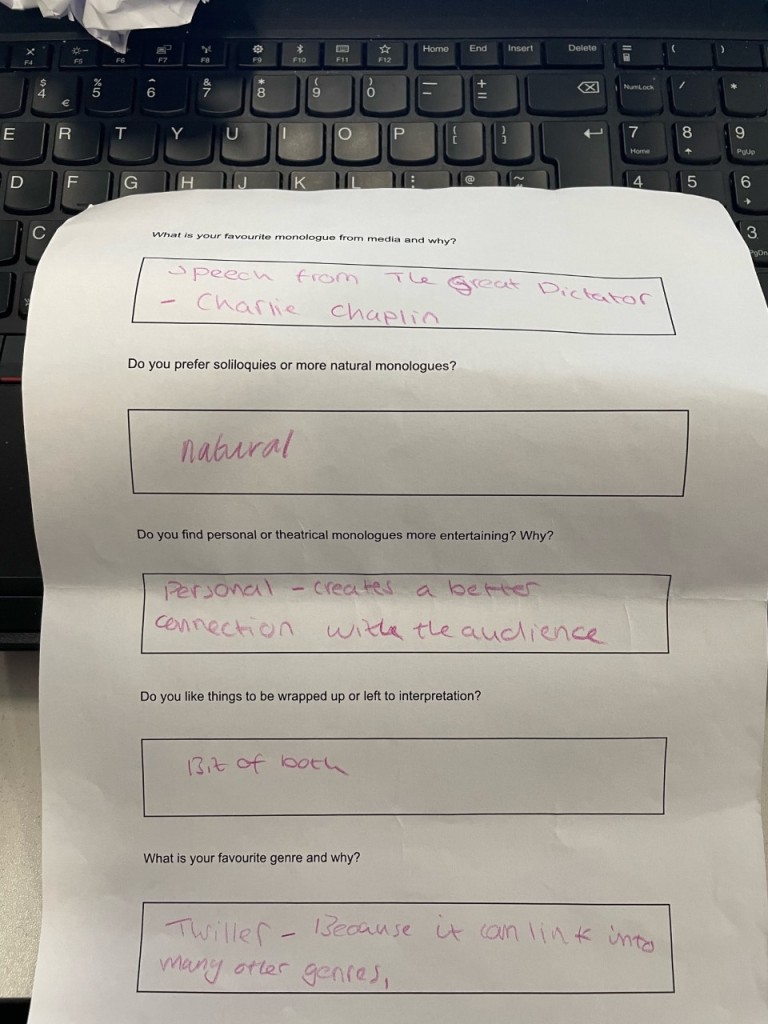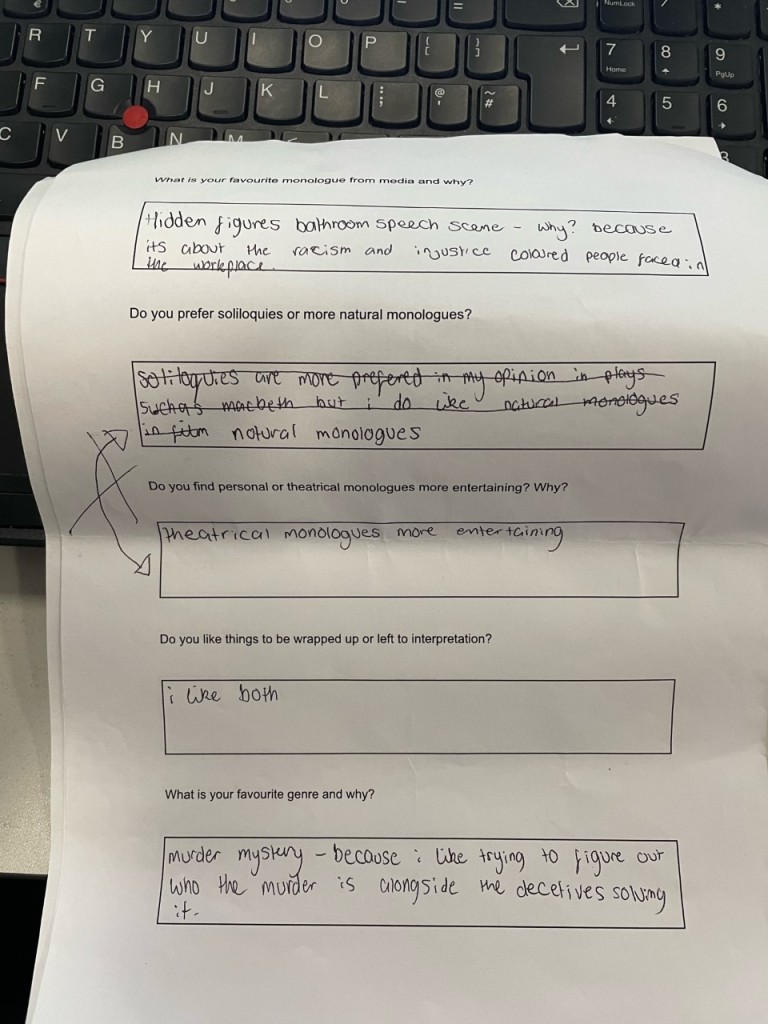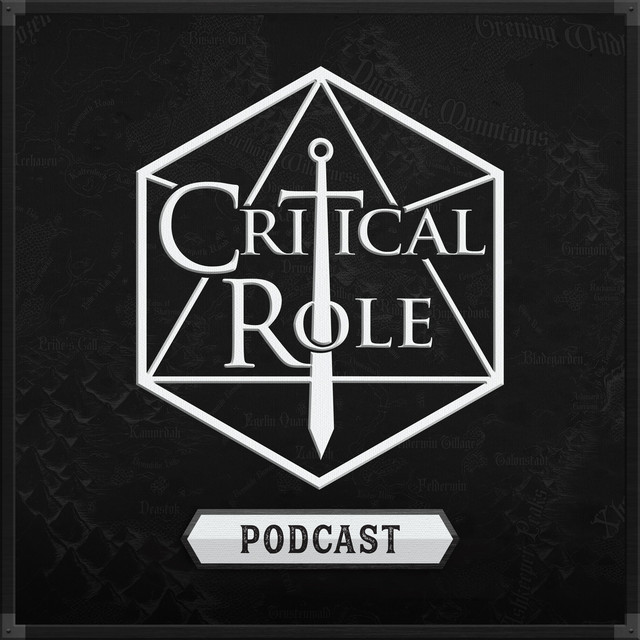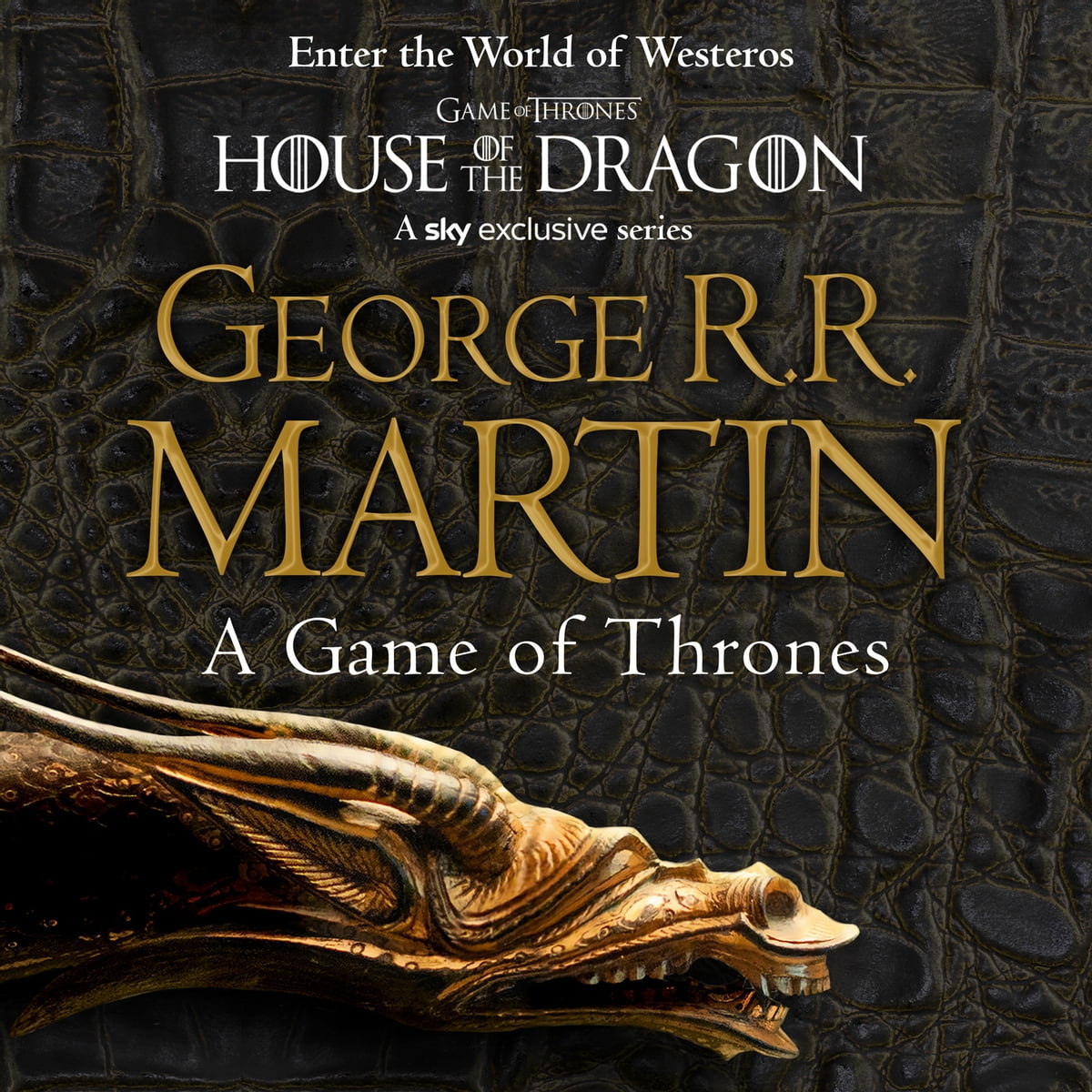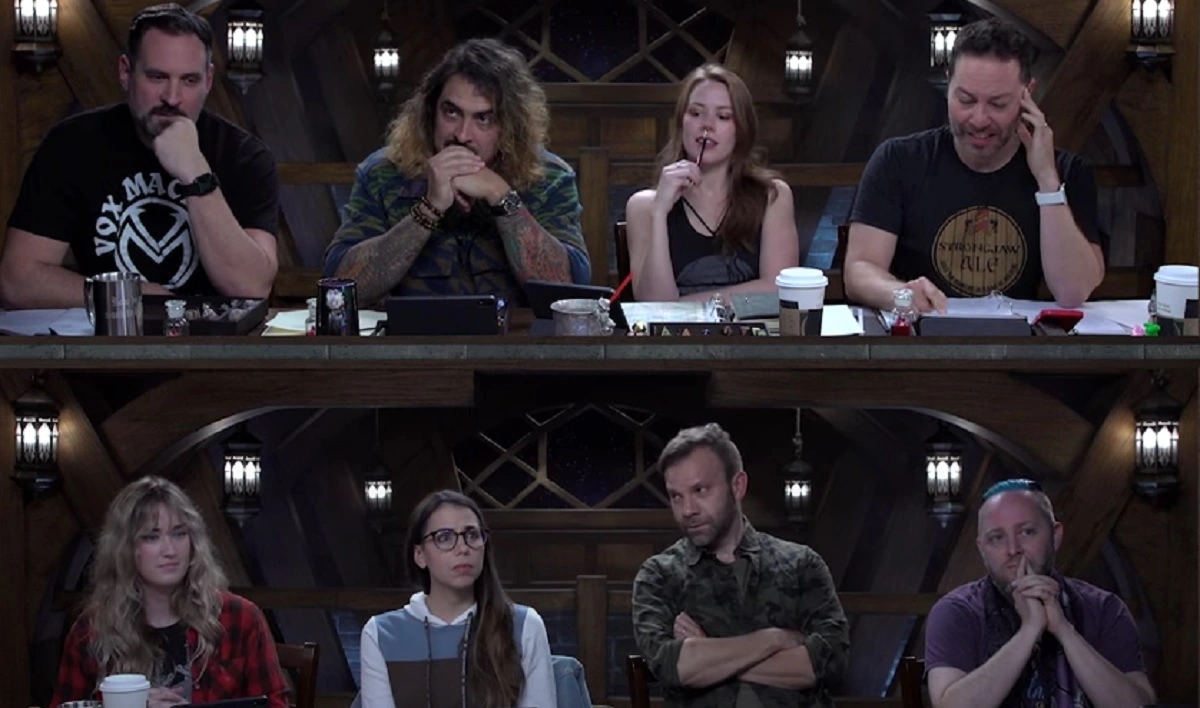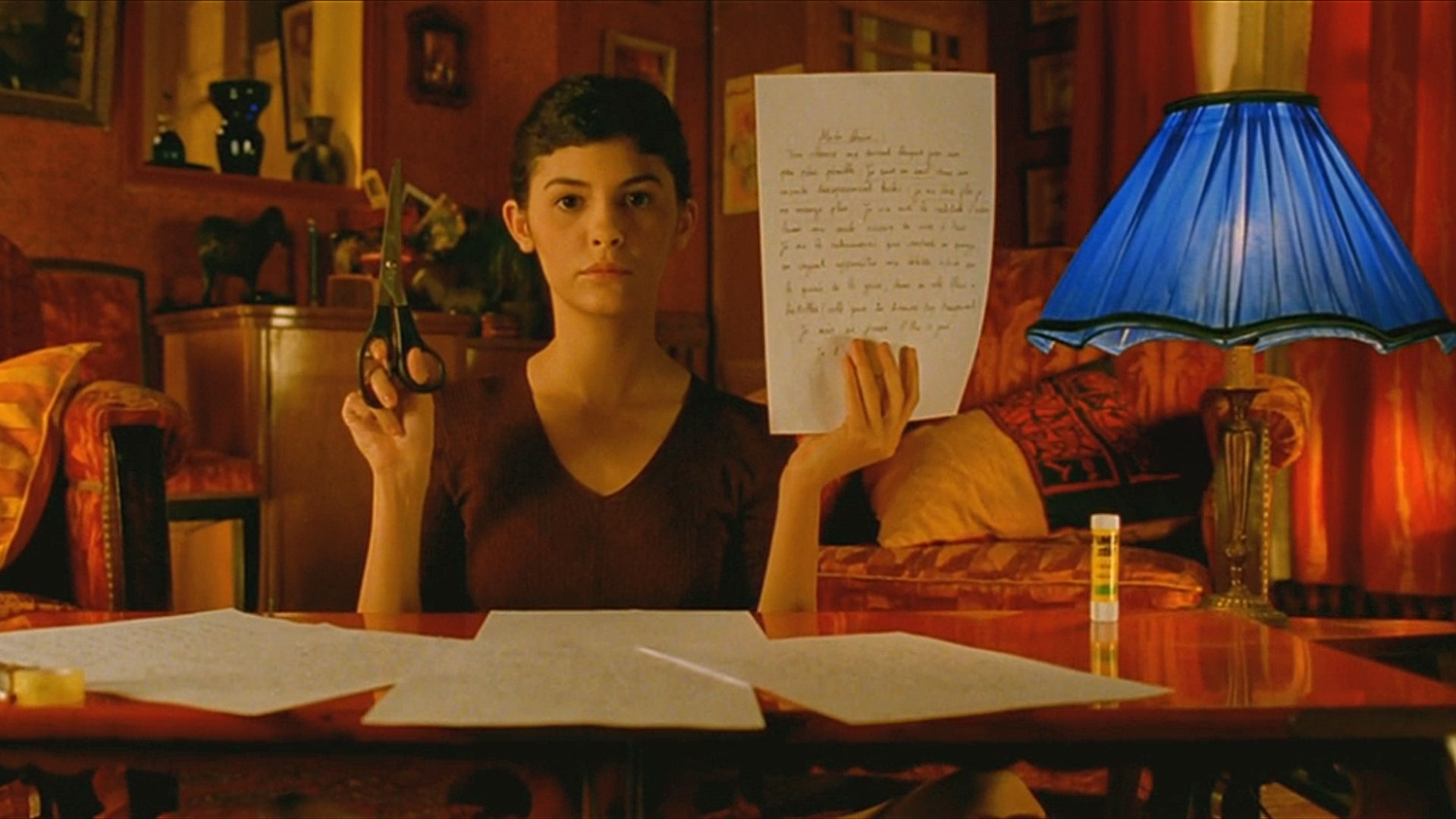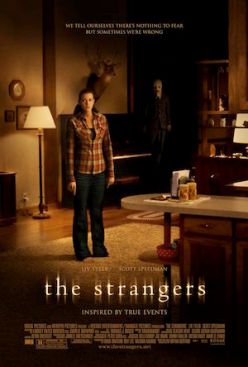13th March
This year I kicked off my FMP by taking a trip with the college to Tenerife. Over the two weeks I was supposed to spend there, I would have worked with a charity called Whale Nation in their animal rescue projects all the while learning about the island’s cultures; specifically its witches and the mythology surrounding them. These activities would have acted as the basis of my primary research where I would create a short book detailing the island’s folklore.
However, I was unfortunately unable to complete the trip and ended up coming back to the UK after just a few days. This meant I had to come up with a new idea for my FMP. Amidst this, I was also dealing with an injury I suffered on the trip, which threw another spanner in the works as I had to attend hospital appointments and work around my injury.
This also prevented me from attending college everyday, so I had to make sure to create a solid dialogue between my tutors through email.


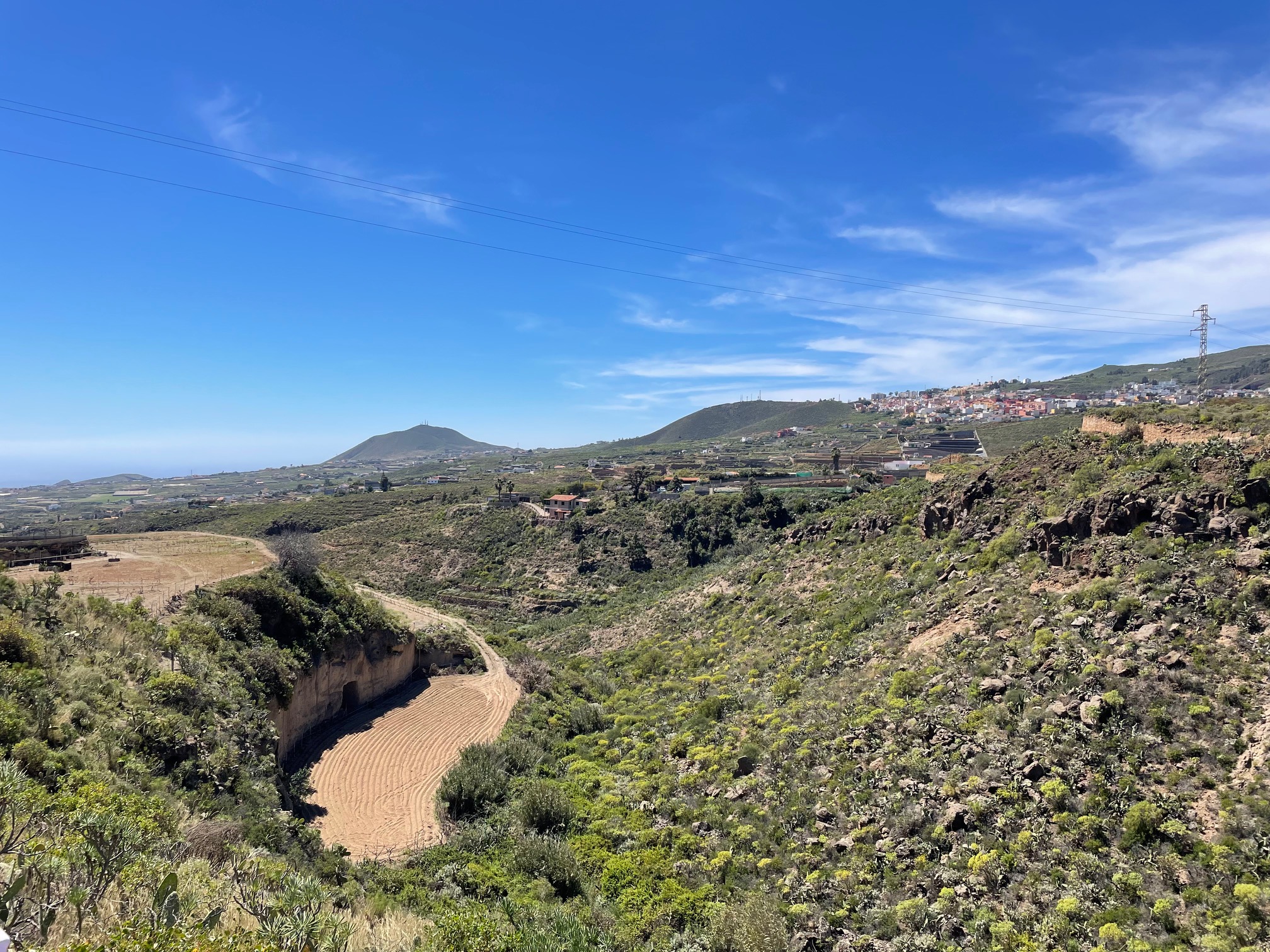

20th March
I juggled a few concepts after coming back from my trip. I considered returning to last year’s project (a text-based video game) and thought about expanding on its story or creating an offshoot set within the same world. I also had a collection of short story plots and an idea for a fantasy cookbook that would tell a story with each of its recipes. But I ultimately felt that these concepts didn’t have enough substance to back them up.
So, inspired by the recent release of Scream 6 and a handful of other horror films that have come out over the last decade, I finally decided on making a short film script in the spirit of 90s slashers. I chose a cinema as the setting as its an environment I have always been interested in using in a script, due to my love of going to the movies and the themes you can play around with – i.e “the death of cinema.”
Moreover, in a lot of my write ups for my projects over this course I have cited various horror films as inspiration and major sources of research for my writing. With my work on monologues, film treatments and scriptwriting this year I felt that it was fitting to combine all of this into making a script for my own short film – complete with a set of storyboards roughly outlining the structure of each scene.
Settling on a new concept, I began putting together a pitch for my FMP. I made an effort to make this pitch much more digestible than my previous ones as wordy slides and poor structure often led to me tripping up on myself.
27th March
With my plan for my FMP outlined, I pitched my idea to the class in a presentation that I was, overall, proud of. My idea and production schedule was clear, I answered questions confidently and besides a few hiccups, I spoke succinctly. I also tried to stylize the powerpoint I used for my pitch, creating a theme that resembled a cinema to match my concept.
Part of this process also included watching other people’s presentations wherein I made an effort to ask questions that were specific to their project rather than ones that were more generalised.
After this, I got to work on my first draft for my script – writing up an introduction to the first scene and laying out my title page. To layout this skeleton of my project, I refered back to interview I saw online with David Lynch wherein he talked about the process of writing a screenplay. He suggested the idea of creating cards with rough outlines for each of your scenes until you have enough for a feature length film. This was a greate exercise to break through my writers block and had helped me develop my script.
3rd April
I used the Easter holidays as an opportunity to expand upon my research for this project, reading the first few chapters of The Foundations of Screenwriting by Syd Field, gaining some insight on the fundamentals of putting together a script and crafting a story. Alongside this I also read and finished the screenplay for Joker (2019). While the themes at play in this script don’t necessarily relate to my project, I still felt that reading through it was an invaluable experience as it was a source that I could directly refer to if I was struggling with formatting and structuring my script. It was also one of the only physical screenplays I could easily access.
During this week I also watched a handful of horror films to help with my research. One film that I didn’t feel was substantial enough to go into my main research but is worth mentioning was the remake of Suspiria (2018), a film that delves into obsession, femininity and guilt – a primary theme in my script. Watching this film gave me an idea as to how I could present my themes while also warning me of what to avoid, due to its slow pacing and convoluted messages.
As well as film and books, I went to the YouTube channel, Lessons from the Screenplay, whom I have used many times in past projects for research. Their videos breaking down what exactly makes a script tick are always insightful and provide me with new knowledge on the techniques and termninology present in screenwriting.
10th April
During the second half of the holidays I took a trip to Paris to explore the city and take part in a film festival. The festival hosted a variety of short independent films, each with their own varying styles and subject matter. Naturally, watching short films like this was beneficial for the development of my own film. I had an opportunity to garner a better understanding of how short form content like this is effectively put together.
One thing I also noticed was that these films usually only featured 1-3 characters, as anymore would leave the film feeling bloated or undeveloped. This has caused me to revise the cast of my script as I currently have seven, including my antagonist. I feel that I will either have to cut some of these characters or lengthen the script than I had originally planned to accommodate them all. The latter option feels like a tall order this far into the project as it will mean I need to come up with and storyboard brand new scenes and sequences.
With my script being set in a cinema, exploring the festival’s theatres was also a helpful form of research in itself. It’s more references that I can use when it comes to mapping out my own fictional cinema in my storyboards.






17th April
Rather than slimming down my cast I ended up deciding to extend the length of the script so that I could give myself some breathing room. Now I was looking at a word count goal of 10,000 instead of 5,400, beefing up my writing quota for the remainder of the project.
With this transition I broadened my research to include more media that was representative of this format, such as Guillermo del Toro’s Cabinet of Curiosities (2022). The show is an anthology series with each 50 minute episode telling a different, self-contained horror story. The structure and length of each episode was the perfect skeleton for this new version of this script. I returned to my favourite episode Autopsy for its tight script, pacing and gnarly ideas.
It gave me a better understanding of how I should be managing my characters and moving my script along.
This was not the only change that my project underwent. In my pitch I discussed my intentions of interviewing people who work at a cinema’s to gather some solid insight as to what the job is like. I wanted to do this so that my script felt more authentic in spite of the supernatural elements present.
While dissapointed with this, I was able to work around it by turning to websites like Reddit which features an endless amount of forums all started from different questions. Sure enough, I found a handful from users with the exact same questions as me and I was able to get a better understanding of working in the setting through the answers they received. I combined this with my own experience working in hospitality to write a realistic working environment.
24th April
This week was all about getting my head down and writing. I had a new vision for my script and solid idea of where it was going, so all that was left was to make it. In between my project work I also made an effort to visit the cinemas again to get more references as I needed some help mapping out the layout of my setting.
During this week I also took some time to return to my project proposal and properly write it up using the notes I created for my pitch. I was a little annoyed at myself for not completing this sooner in the project as it distracted me from the more important aspects of my work.
Nevertheless, I managed to get these notes onto my blog while still making steady progress with my script.
I also found some time this week to go and see Evil Dead Rise (2023). This film, surprisingly, has made a big impact on my writing; specifically influencing how I write and present the villain of my story within my script. While I was there, I thought it would be the perfect oppertunity to gather some reference photos of the cinema to help with the development of my setting.
1st May
At the start of this week I began having some worries about my production. I realised that with my script doubling in size that what I originally planned I wasn’t going to have time to put together a collection of well produced storyboards.
I considered only focusing on a couple for some of the more important shots of my script, taking time to ink, shade and add notes to them. However, after speaking to my tutor, I came up with an alternative idea that I felt much more confident about: a poster.
Posters, especially from the classics, are an integral part of a film’s identity. Whenever someone thinks of The Thing (1982) it is likely that the iconic image of a silhouette in a snowy tundra from the movie’s poster will come to mind. Not only did this idea better suit my project thematically, but I could produce it to a much better quality than my storyboards as it would be the only piece I have to focus on.
8th May
Since I decided on making a poster last week, this week I have put aside some time to compile a handful of moodboards to represent the style and themes I want to evoke.
I first turned to the grainy posters of horror films from the 70/80s, pushing on towards the universal monster era. The vintage aesthetic of these posters is an art style that I have always loved, for their popping colours, detail and just how well they capture the mood of their respective films.
The style influenced one the first design I came up with for my poster: a gallery of posters featuring different characters from my script all in the style of those old horror posters. I did worry, however, that I wouldn’t be able to bring this idea to life due to the amount of time I had left in the project and because of my drawing ability. I shelved the idea but didn’t discard it entirely.
Inspired by some images of screen rooms I found, I thought about using this style in a different piece. It would be a shot of my cast sitting down and watching a film screen (facing the viewer) with the flair of the projector lighting their faces. However, I had the same worries as the previous idea and one my peers pointed out that it just wouldn’t work logistically – for example, the position of the light would create silhouettes instead of lighting their faces.

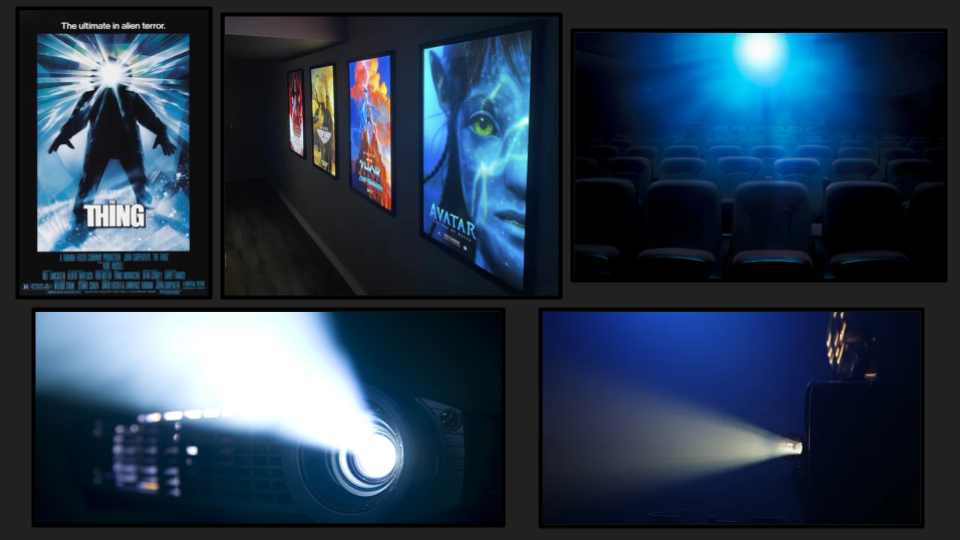
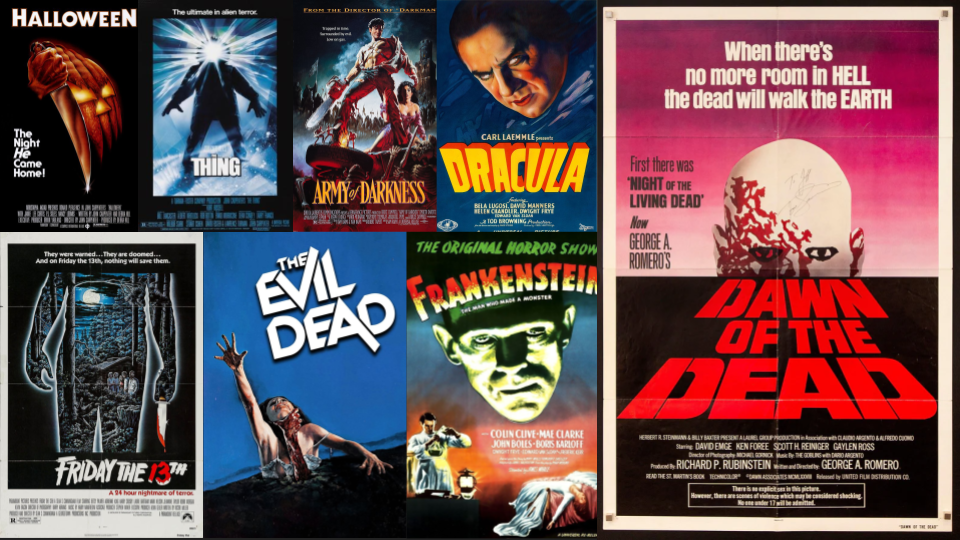
During this week I also got some feedback on my research thus far. Based on the suggestions I received, I went back to my notes and expanded on my experience in Paris and broadened the media types included in my list of sources. I was surprised to realise that I hadn’t included any video games despite them being such a massive part of my FMP last year. Because of this I looked into a video game called The Quarry (2022), a story based game inspired by horror films, for the sense of mystery it establishes in its opening couple of hours. It teases the player by hiding its true nature, not making it clear what kind of horror show in you’re in for until the bodies finally stop dropping. I felt that this was beneficial to my research as I am hoping to creating a similar effect in my script.
15th May
This week was the final stretch. I finally reached the end of my script, something I had hoped to do in April, and it was time for me to start finalising all my notes.
Before that, however, I needed to format my script in Celtx as – up until this point – I have been focusing on getting my story down rather than making sure everything laid out in a proper manner. Celtx was more convient than formating my script in google docs as the sight had in built tools specifically designed for screenwriting.
I took the notes I had been making in google docs for the last three months and compiled them into WordPress posts, accompanied with an array of photos to provide context on what I was talking about. I kept these as drafts on my blog to upload next week when everything was ready to be handed in, including this journal.
I also decided on what design I was going to use for my poster. I started looking to a minimalist design philosophy that would save me time but still allow me to create something that was unique and specific to my screenplay. I still wanted to retain the graininess and imperfection of my other mood boards, however, and began searching for pieces that fitted that union.
I turned to one of my favourite Twitter artists, PITCH CANKER. The intensity of their work in their lines and their simple and effective colour palette felt like perfect inspiration for the atmosphere I was trying to create. PITCH CANKER is also an artist whose work I looked at the beginning of the project when putting together my pitch. Their piece “Guilty” was one of the motivators behind why I chose to write with the central theme of guilt.
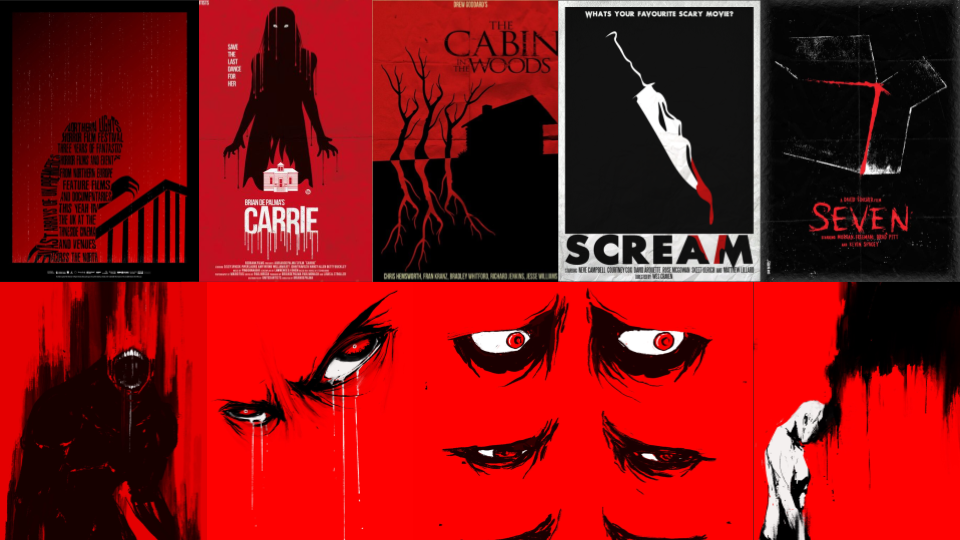

22nd May
This week was all about getting everything on my blog. I read over my notes to make sure I had included everything I needed to talk about and that I had formatted my posts for WordPress.
Settled on a design for it, I was able to complete my poster to be submitted alongside my script. I was surprised and happy with how the final product turned out. I feel that represented the inspirations I had discussed while also making something that was unique to me. I did struggle for a while when trying to create the effect on the skull but after some experimentation with the brushes Procreate (the software I used to draw it) I eventually landed on an effect I was happy with by using an oil brush. I decided to leave the rest of the poster relatively bare bones so that the design didn’t seem too noisy.
Once the poster was complete, I could start writing my evalution. I made sure to explain the challenges I face and, like in this journal, how I overcame them. I also explained my thinking behind idea development behind my FMP, explaining why exactly I chose to do something like this for the project.
This week I also skimmed through my notes to make a list of everything I had referenced in order to put together an accurate bibliography. This was much less time consuming than last year as I could refer back to those notes and how each different piece of media should be properly cited.
At end of my project I am, overall, satified with my work. Though I feel that I could have managed my time better to finish some work sooner, allowing to focus on expanding other parts of the project, I am still proud that I finished a complete screenplay alongside: a poster, extensive research and all the logs I have made in this journal.
In the future, I would happily and likely am to expand on the work I have done here to take it that extra step.



